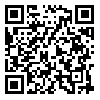Volume 6, Issue 4 (November 2019)
IJML 2019, 6(4): 234-240 |
Back to browse issues page
Department of Transfusion Medicine, Regional Cancer Centre, Trivandrum, India.
Abstract: (1242 Views)
Background and Aims: A subgroup of group O individuals called ‘dangerous universal donors’ have immune (IgG) anti A and anti B antibodies which are active at 37˚C and capable of reacting with the red cells and causing lysis. The aim of this study was to find the prevalence of dangerous O group among the voluntary donor population and to assess the relation between the degree of haemolysis and the antibody titre.
Materials and Methods: Group O donors excepting those with history of transfusion or pregnancy were included in the study. The serum samples were tested for haemolysins as per standard procedure. The degree of haemolysis was graded and strongly haemolytic samples were further characterised for the type of immunoglobulin class after treatment with dithiothretiol. The results were coded and analysed using SPSS software.
Results: The age of the donors in this study ranged from 18 to 56 years. Majority were males. The prevalence of dangerous O group in our study population was found to be 10.75%. Within the dangerous O group samples, the titre of anti B IgG antibody was found to be higher than anti A IgG antibody. Titres for both anti A and anti B IgG antibodies ranged from 1:2 to 1:64.
Conclusions: A simple screening for donor haemolysins will help in identification of strongly haemolytic samples, which are likely to have high titres of IgG, particularly anti A antibody. This will prevent transfusion of blood containing high titres of immune anti A and anti B antibodies to non O group recipients.
Materials and Methods: Group O donors excepting those with history of transfusion or pregnancy were included in the study. The serum samples were tested for haemolysins as per standard procedure. The degree of haemolysis was graded and strongly haemolytic samples were further characterised for the type of immunoglobulin class after treatment with dithiothretiol. The results were coded and analysed using SPSS software.
Results: The age of the donors in this study ranged from 18 to 56 years. Majority were males. The prevalence of dangerous O group in our study population was found to be 10.75%. Within the dangerous O group samples, the titre of anti B IgG antibody was found to be higher than anti A IgG antibody. Titres for both anti A and anti B IgG antibodies ranged from 1:2 to 1:64.
Conclusions: A simple screening for donor haemolysins will help in identification of strongly haemolytic samples, which are likely to have high titres of IgG, particularly anti A antibody. This will prevent transfusion of blood containing high titres of immune anti A and anti B antibodies to non O group recipients.
Type of Study: Research |
Subject:
Genetics/ Biotechnology
Received: 2019/12/10 | Accepted: 2019/12/10 | Published: 2019/12/10
Received: 2019/12/10 | Accepted: 2019/12/10 | Published: 2019/12/10
| Rights and permissions | |
 |
This work is licensed under a Creative Commons Attribution-NonCommercial 4.0 International License. |




